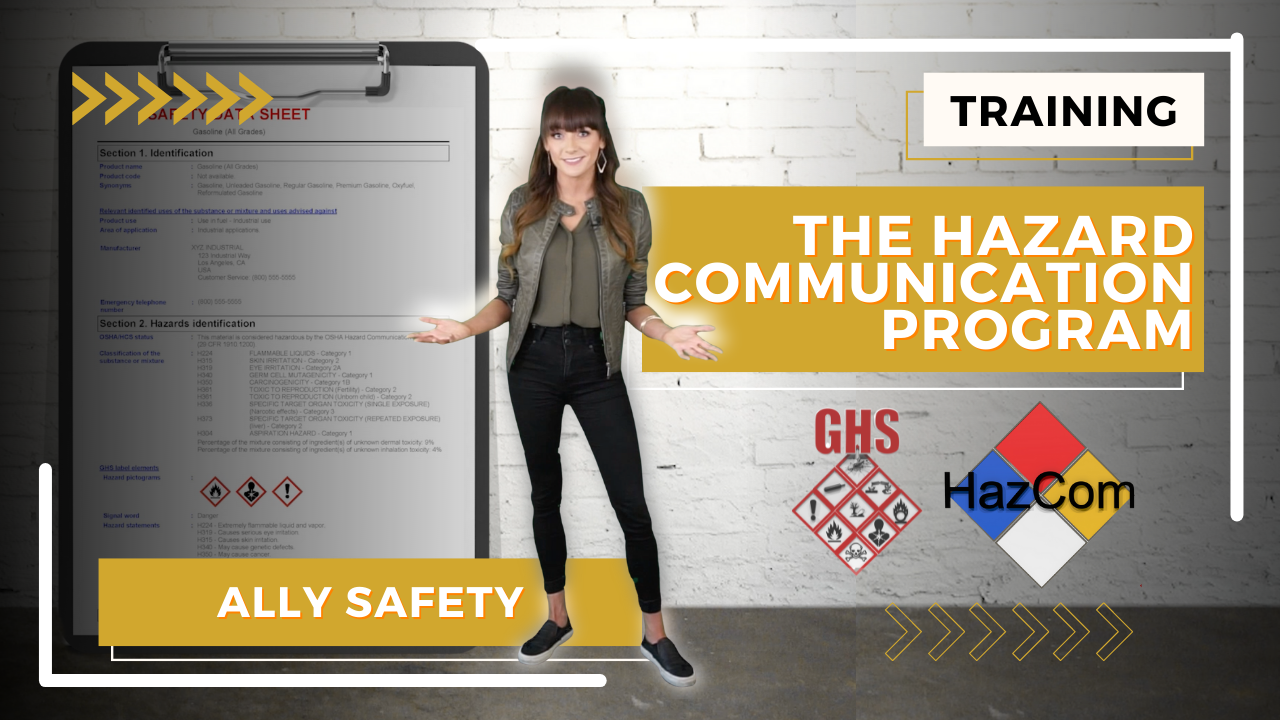I will be honest with you, when I first started training employees on the OSHA Hazard Communication Standard, it was a real struggle to get anyone to see why this standard matters to them personally.
Luckily, it's not anymore. I'll explain why.
What is the OSHA Hazard Communication Standard?
When I say OSHA-compliant Hazard Communication Training, you may think
“That sounds boring”
“Please stop talking to me”
Or
“If I zone out for the entire training, does it still count?”
But there’s more to this OSHA standard than an attention-grabbing title - and I mean that very sarcastically - the title never thrilled anyone.
In the United States, we as consumers, have become much more discerning about what is in the products we buy when it comes to food, home goods, and cosmetics.
But when it comes to hazardous substances in the workplace, we tend to be a bit more casual.
That's where explaining the importance of WHAT the Hazard Communication Program is and HOW it impacts employees as individuals comes into play.
How We Learned About Hazards Before the Hazard Communication Standard
In my experience, no one wants a 20-minute history lesson before we jump into the meat of the topic.
That being said, I've found it incredibly helpful to give a few (maximum 5-minute) examples from history to bring the point home of why we needed the Hazard Communication Program in the first place.
Here are a few ideas to get you started:
"Imagine back in the early days of the industrial revolution when assembly lines and manufacturing were still in their infancy....
Back then, work days were long, working conditions were usually bad. It was quite likely your work could make you sick with few repercussions to your employer. These were the days of unknown exposures to substances like radium, byssinosis, asbestos, lead and much, much more!"
You can find specific examples that might resonate with your industry. Here are some of my favorites.
- Phossy Jaw and the Matchstick Girls
- Libby, Montana Asbestos History
- Radium Girls
- Black Lung - A Century of Denial
- Byssinosis - Monday Fever
The purpose of this is to make knowing about the hazardous substances we work with important and relevant.
How the OSHA Hazard Communication Standard Improved the Information Available to Workers
Next, it makes sense to focus in on the benefits the Hazard Communication Program offers to employees like the right-to-know about hazardous substances in the workplace.
After all, we want employees to be aware of the substances that have the potential to cause harm, and to take the steps we as Safety Pros work so hard to implement, to protect themselves effectively.
This is a great place in the training to get specific of the WHY behind the HOW behind certain procedures.
Specifically, why the steps are in place and how to utilize the protections in place to effectively prevent hazardous substance exposures.
This is where I make sure we cover all our OSHA requirements while always making sure to relate why this information matters.
This is also a great time to take the boredom and mystery out of Safety Data Sheets or SDS's.
Since that can be a bit of a challenge, here's a video that's part of our Hazard Communication Standard Training that you can refer to for ideas.
Next, Emphasize the Globally Harmonized System (GHS), and How it Improved the Hazard Communication Standard
Now, maybe after talking about SDS information, you have employees thinking, “Great, I’m not a chemist and this information makes no sense to me.”
Well, I’ve got good news for you there too. Back in 2012, OSHA joined forces with the Globally Harmonized System or GHS for short.
Previously, we talked about the Hazard Communication Program being the “employee-right-to-know standard?” Well, the GHS component, is known as the “right-to-comprehend”.
Here's what that means for the average employee who just wants to get through a day of work without being bothered or interrupted too much.
If you want to know about a hazardous substance, the GHS makes it easy to know what those hazards are because they use labels that have pictures, simple text and easy-to-comprehend information. You don’t need a degree in chemistry to interpret the label or the SDS. It’s easy.
There are 9 pictograms, each label has the same components, and SDS’s all have the same 16 sections in the same order.
I cover this in our training course, but if you're looking for a quick refresher for employees on the topic, check out our Hazard Communication Standard Toolbox Talk.
Lastly, Remind Employees to Access Information on Hazardous Substances
The key point of training is to let employees know about the hazardous substances in the workplace and how they can access information and protect themselves.
Make sure to remind everyone about the specific hazardous substances in their workplace, where they can access SDS's, and any other information.
After all, it's not only their right-to-know, but also, their right-to-comprehend!




Leave a comment
All comments are moderated before being published.
This site is protected by hCaptcha and the hCaptcha Privacy Policy and Terms of Service apply.